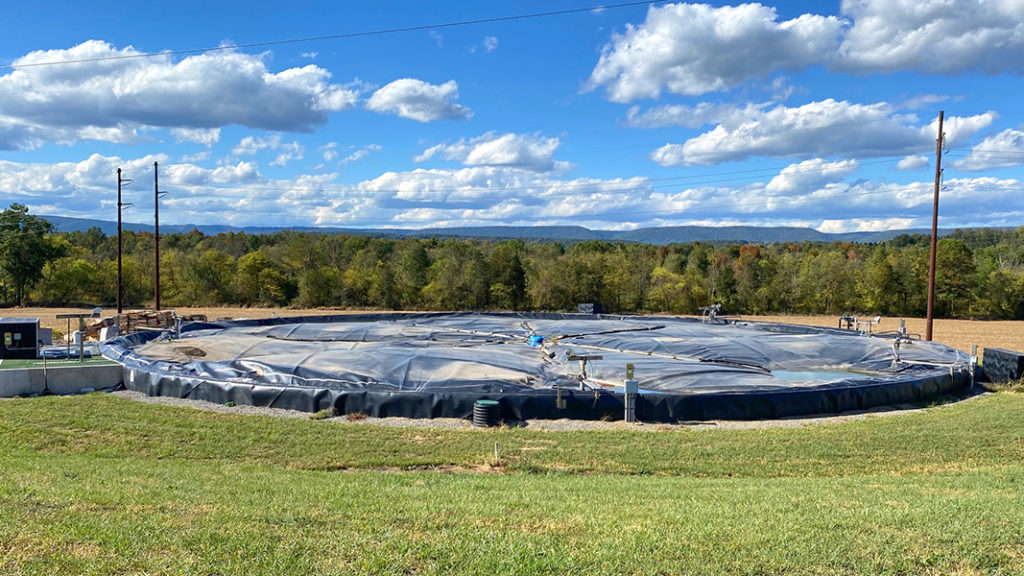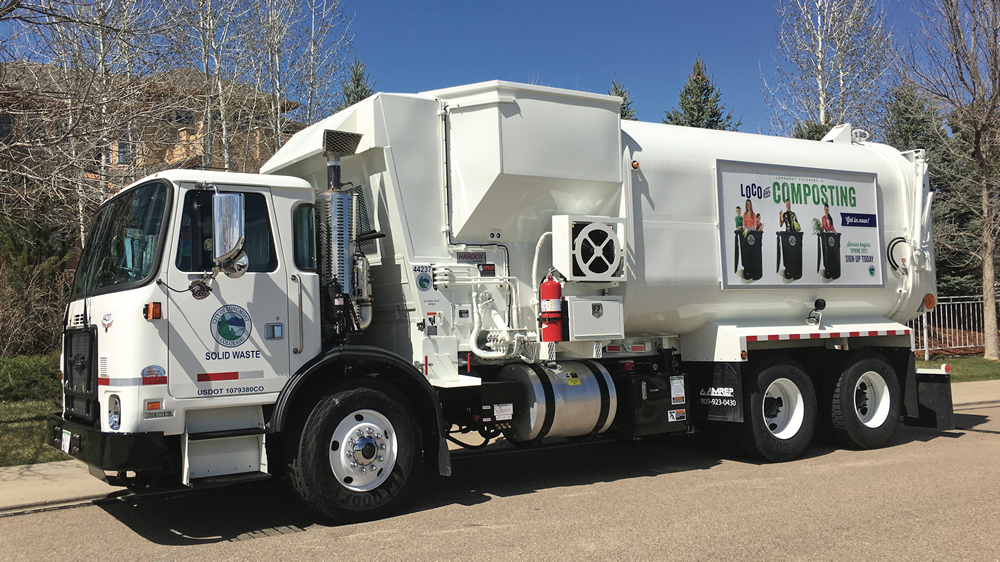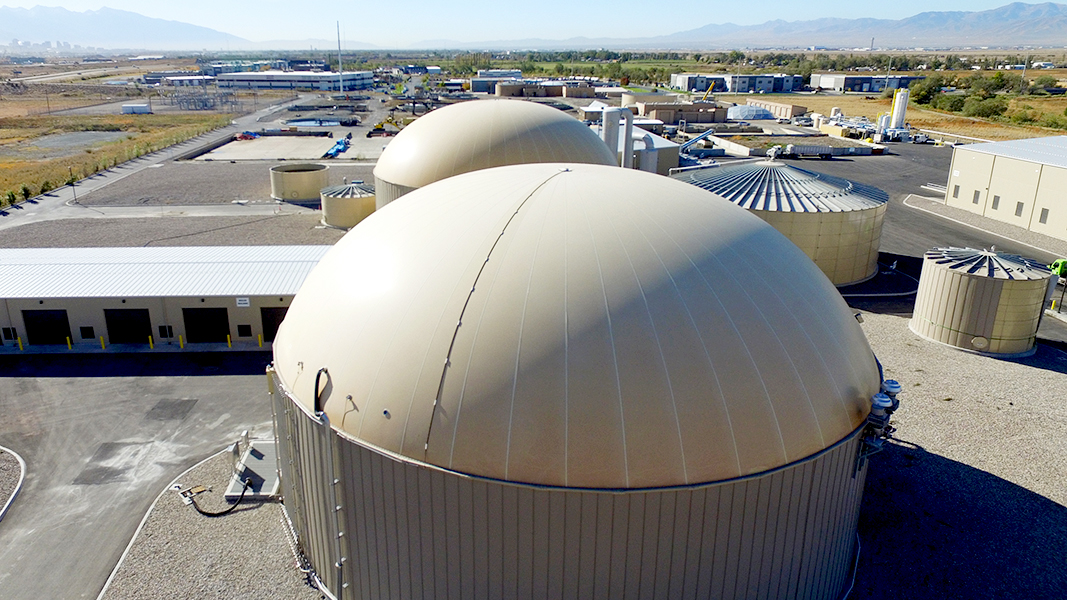The Inflation Reduction Act of 2022 is a game-changer for anaerobic digester and other renewable energy projects, on multiple levels.
Michael H. Levin
After hard-won incremental tax benefits (Levin, 2021), failures to enhance them since 2020 (Levin, March 2018), and the Supreme Court undercutting EPA’s ability to regulate power plant greenhouse gas emissions (GHGs) through sector-wide emissions trading opportunities (Levin, 2019; Heinzerling, 2022), the surprise Schumer-Manchin compromise enacted August 16 as H.R. 5376 within weeks of its announcement seems a renewables sunrise.
Called “America’s first major climate law” — though it will indeed reduce inflation (Powell, 2022) — the $749 billion Inflation Reduction Act (IRA) includes $369 billion for climate-related emissions reduction activities; creates new credits for anaerobic digestion (AD) plus other biofuels producers; extends or expands most current tax credits for business and residential renewable energy projects; largely eliminates current credit phase-downs; makes many credits virtually permanent going forward, through 10-year eligibility provisions; and replaces traditional technology-based credit categories for wind, solar, biomass or other projects with streamlined post-2024 “technology-neutral” credit regimes.
For the first time, the Act also:
- Allows projects to monetize tax credits directly
- Authorizes investment tax credits (ITCs) up to 50% or more of qualified project costs rather than the historic 30%
- Establishes a stand-alone ITC for battery or certain thermal storage
- Creates a $27 billion national Green Bank (called the Greenhouse Gas Reduction Fund) to leverage funding for early-stage or other hard-to-finance renewable energy projects
- Appropriates over $100 billion to support (e.g.) federal, state, local and tribal project permitting, carbon capture and clean hydrogen development, clean transportation, GHG reduction planning, and Energy Department loan guarantees
- Levies post-2024 escalating fees up to $1,500/ton — a “price on carbon” — on potent GHG methane emissions from oil and gas operations
Many of the Act’s appropriations (e.g., $80 billion for IRS tax collection from high-income tax evaders; $40 million for EPA enforcement) are long-term, not one year. It’s expected to more than pay for these outlays through Medicare savings, enhanced tax collection, increased royalties on natural gas extracted from public lands, a 15% minimum tax on the book value (not realized profits) of very large corporations, and a 1% tax on corporate stock buybacks.

The second digester at Reinford Farms, a dairy in Mifflintown, Pennsylvania. Photo courtesy of Reinford Farms
Some of the tax credit changes are retroactive to January 2022 or earlier. Some only apply to projects that “begin construction” (Levin, Aug. 2018) in or before 2022 or are “placed in service” after 2024. They also come with caveats, including a new tiered system under which ITCs and production tax credits (PTCs) feature a low fifth-of-credit “base amount,” compliance with prevailing wage plus qualified apprentice rules to receive “full credit” amounts, and “bonus credit” increases beyond “full amounts” for projects that meet domestic-content rules or site in “energy communities.”
AD/Biofuels Credits
The Act aims to expand access to tax credits (plus billions of dollars in complementary funding) for biofuel and other renewable energy projects. It’s widely expected to surge new capital across the renewable energy space. Still, its new requirements can create pitfalls for project developers. Here are a few highlights:
- Capping a two-decade struggle to secure credits for “green gas” not linked to electricity generation, the Act creates a stand-alone 30% ITC for any “qualified biogas property system” that converts biomass to gas containing at least 52% methane for sale or productive use. “Qualified property” includes any on-site parts of a system that clean or condition the gas. It also includes later project modifications or expansions. The full credit generally is retroactive for projects that “begin construction” within 60 days after the IRS issues prevailing wage and apprenticeship rules (the “Applicable Date”). Thus, projects that “begin construction” in 2020 through at least October 2022 (the earliest likely Applicable Date) can receive the full 30% credit. Projects that “begin construction” after the Applicable Date must meet wage/apprenticeship rules to secure a full 30% ITC, or they will receive only a 6% credit. However, those rules do not apply to electricity-generating projects under 1 MW-ac.
- In addition, the 30% ITC will increase by 10% for projects that incorporate sufficient domestic content, plus another 10% if they site on brownfields or in “energy communities” with fossil-electric plant retirements, coal mine closures, or high unemployment rates. Projects “placed in service” after 2024 will be subject to new technology neutral Clean Fuels or Clean Electricity regimes which provide similar ITCs for facilities that meet low or zero GHG emission rates. All qualified electricity-related biomass or other PTC projects still may “jump” to the ITC. If under 5 MW-ac, they also may include all their interconnection (IX) costs in ITC basis, even if IX components they pay for are “owned” by their serving utility. Meanwhile 100% “bonus depreciation” for projects’ purchase of new or used business assets remains available for equipment “placed in service” the rest of this year under the 2017 Tax Cuts Act (Levin, Feb. 2018), though it starts to phase down by steps in 2023 to zero after 2026.
- Other IRA provisions will benefit AD, landfill gas, or sister biofuels projects through favorable financing and/or increased product demand. These provisions include: $2 billion for USDA’s Rural Energy for America (REAP) program to promote rural or agriculture-related renewable energy; extensions or increases in per-gallon credits for year-by-year sale of certain biofuels, generally through 2024; new credits for clean technology infrastructure (e.g., electric vehicle charging stations) or parts manufacturing (e.g., filtration systems or advanced system controls); and extensions of fuel-related excise tax credits or rebates. IRA also contains a new credit of up to $1.75/gal for qualified “sustainable aviation fuel” produced and sold for two years after 2024.
- The Act’s expansions of solar tax credits may further benefit biofuels developers. Most of those expansions — including reinstatement of a solar PTC that lapsed in 2006 — are beyond this article’s scope. However, biofuels projects that (e.g.) use qualified solar to power compressors or other process equipment may capitalize not only on enhanced credibility, but from siting such solar facilities in disadvantaged communities. Additional “bonus” credits could boost those solar facilities’ ITC to 60% or even more, though such “50% plus” credits must be allocated by the IRS.
- Cash for credits. Most project developers lack sufficient “tax appetite” to use credits efficiently. Until now, monetizing those credits has been possible only by partnering with certain credit-hungry taxpaying entities in complex “tax equity” transactions (Martin, 2021). These transactions create risks and involve extra legal costs plus “haircuts” in the value of credits transferred. They also may turn on the shifting tax appetites of a few dozen large banks or insurance companies.
- For projects “placed in service” after 2022 the Act changes this, in two ways. First, private tax-exempt entities, plus (e.g.) counties, the Tennessee Valley Authority or Indian tribal governments may elect “direct pay” by which the face value of their credits is treated as a cash tax payment, resulting in an IRS refund check. This option also is available to certain taxpaying projects (carbon capture/sequestration, clean hydrogen production, and advanced renewables component manufacturing), to accelerate deployment and reduce reliance on offshore imports or global supply chains — but only for 5 years. Second, any taxpaying biofuel or other project not eligible for “direct pay” may sell all or part of its credits to another unrelated taxpaying entity — but only for cash. Sale amounts are not income to the seller or deductible by the buyer, generally mirroring how traditional tax credit monetizations are treated.

The City of Longmont, Colorado is fueling its collection vehicles with renewable natural gas generated at the city’s wastewater treatment plant. Photo courtesy of City of Longmont
- Importantly, “direct pay” claimants must await refunds till after a tax return date. Recapture rules will apply to “excessively” valued credit transfers, though it’s unclear if the seller or buyer will be held responsible. Those rules likely will be trivial for PTC claimants whose yearly credits already will have been booked due to completed production, but may pose risks for ITC claimants whose upfront credits may be subject to post-operation audits. Credit buyers cannot resell what they buy, though they now may “carry back” credits three years to reduce previous tax liabilities. They apparently will remain subject to passive-loss rules, making sales to (e.g.) doctors or dentists impractical. Unlike traditional tax-equity transactions, neither “direct pay” nor credit sales can monetize depreciation, often a significant part of project capital stacks.
- Credit sellers still will have to meet buyer creditworthiness and risk-indemnity requirements, which for reasons above may be more stringent for ITC sellers. Smaller projects may have difficulty selling credits unless they can “bundle” them with credits from similar projects. Where a credit-creating entity includes tax-exempt and taxable partners, it may be blocked from either “direct pay” or a sale. And some states still may tax credit sales. These factors may push credit-generating projects towards traditional tax equity structures — though ability to use “direct pay” or sell credits may put a floor under those structures’ terms.
Some Takeaways
The Inflation Reduction Act aims to accelerate domestic renewables-related production and installations while creating “good-paying new energy jobs,” particularly in disadvantaged communities or areas depressed by coal or other fossil fuel-related closures. It also seeks to develop and expand a trained renewables workforce. It contains dozens of interlocking tax credit and subsidy provisions to help achieve these goals, only a few of which are noted here.
Unlike previous federal efforts to reduce power plant or other GHG emissions, the Act relies far more on carrots than regulatory sticks. It’s projected to reduce U.S. GHG emissions about 40% below 2005 levels by 2030. Whether it does so will depend in part on federal, state and local agencies — plus renewables-related manufacturers and developers — staffing up in tight labor markets to carry out the statute’s plans.
Mike Levin, a BioCycle Contributing Editor, is managing member of the virtual law firm Michael H. Levin Law Group, PLLC (Washington DC) and a principal in NLGC LLC and Solar Shield LLC, which respectively focus on capital formation for renewable energy projects and optimized development of rooftop PV systems in the District of Columbia area. From 1979-1988 he was National Regulatory Reform Director at the U.S. EPA. John Marciano of Allen & Overy (Washington DC) commented on a draft of this article.



